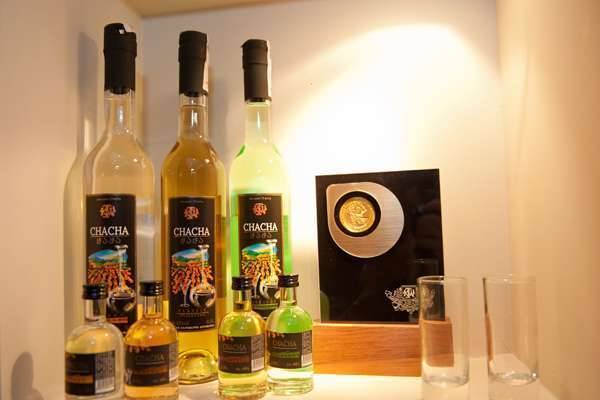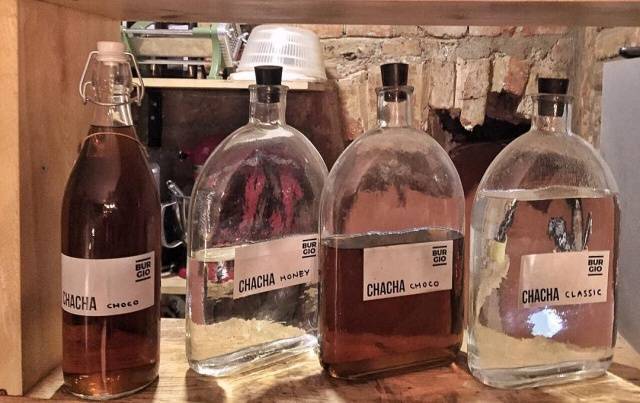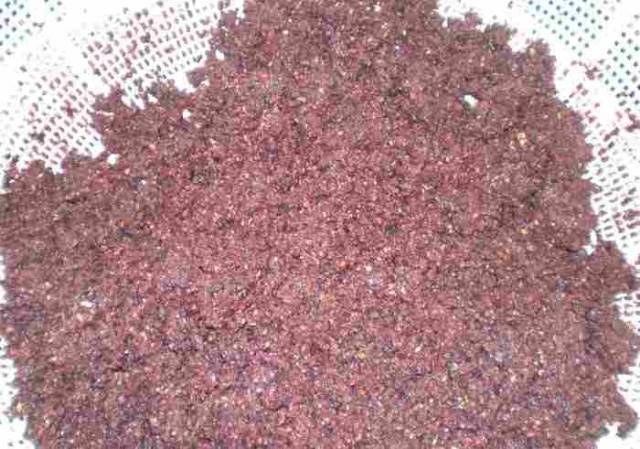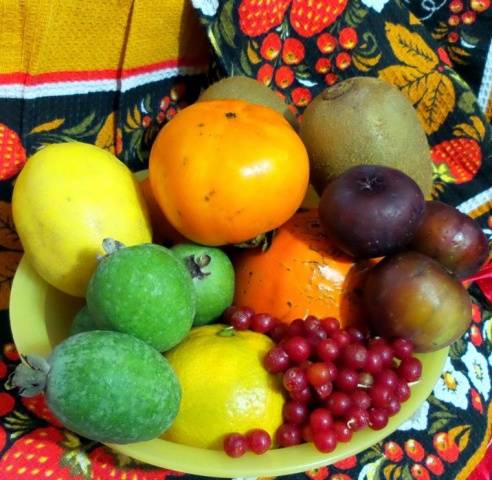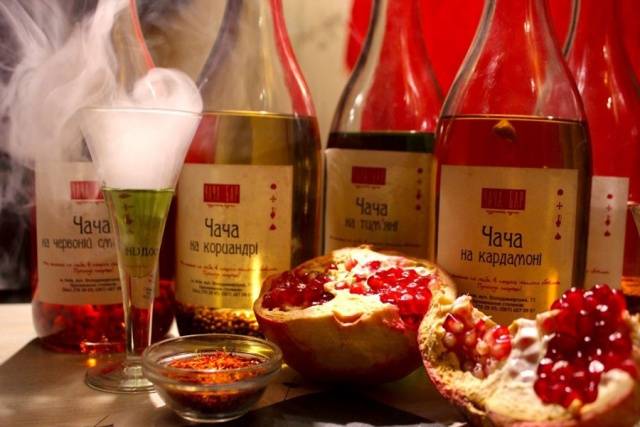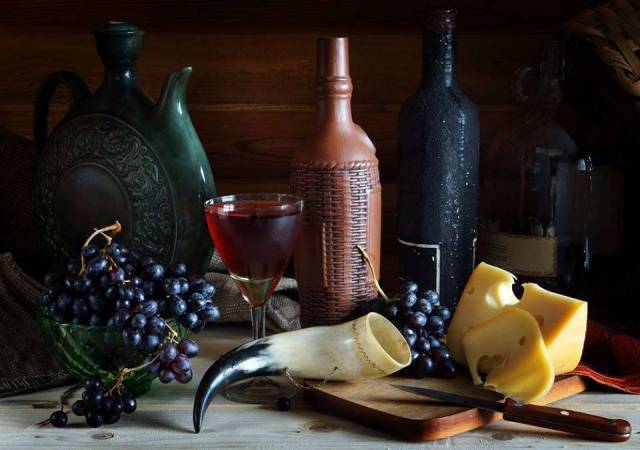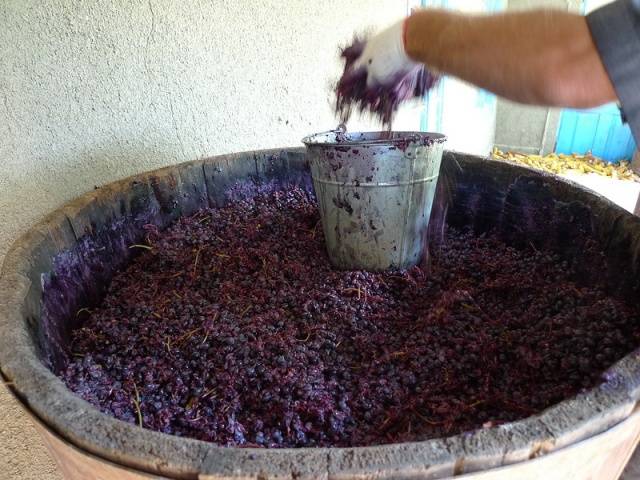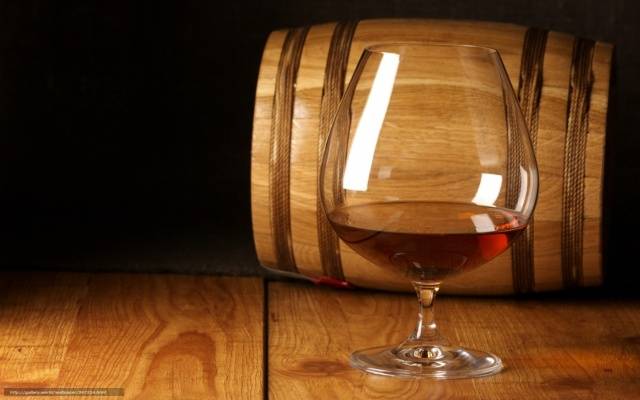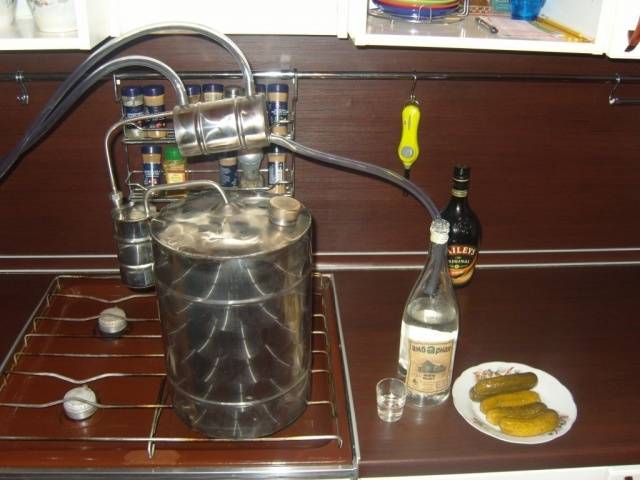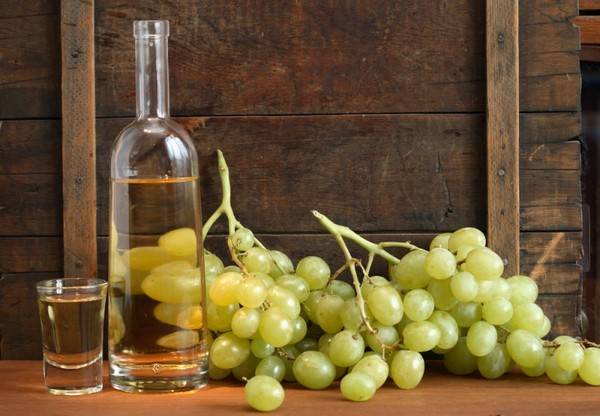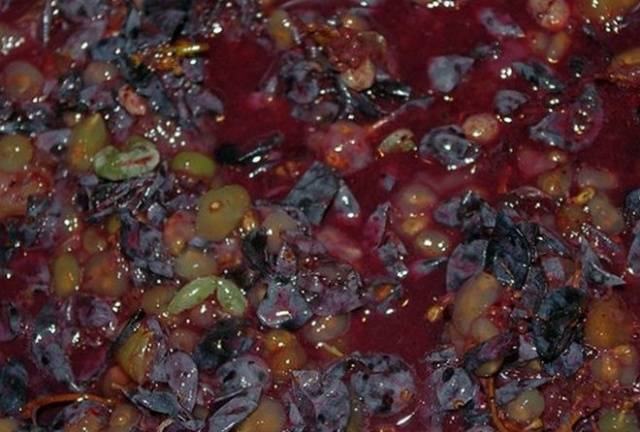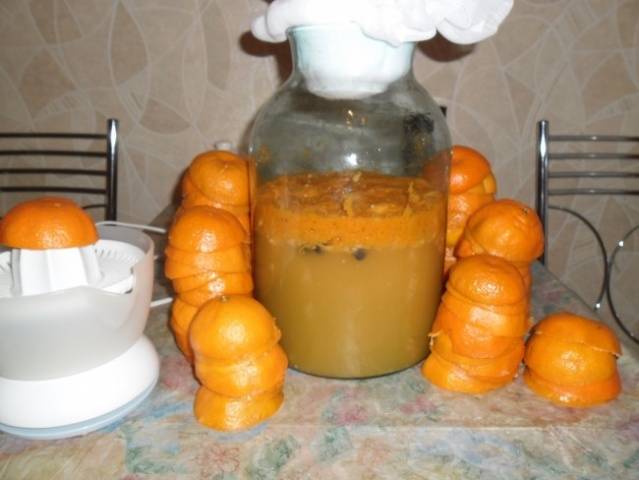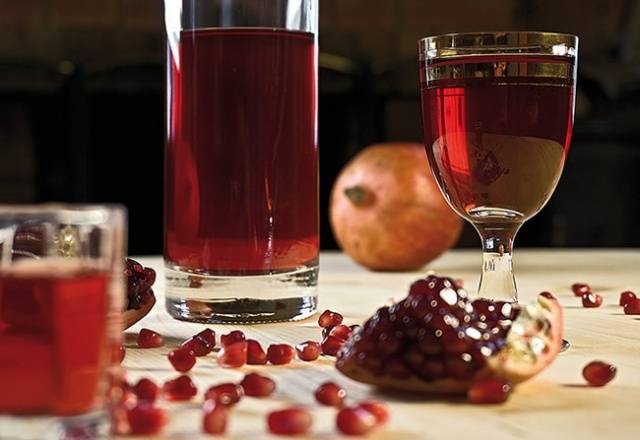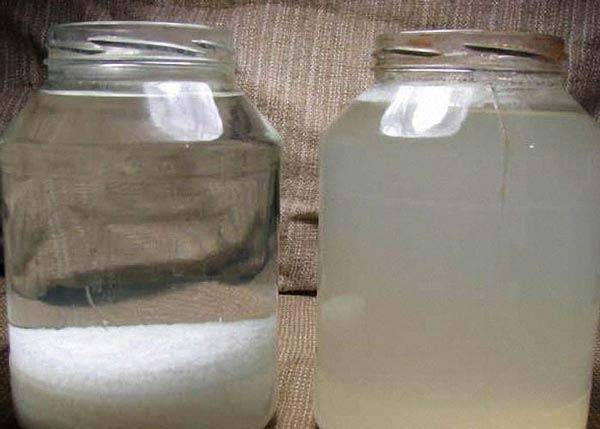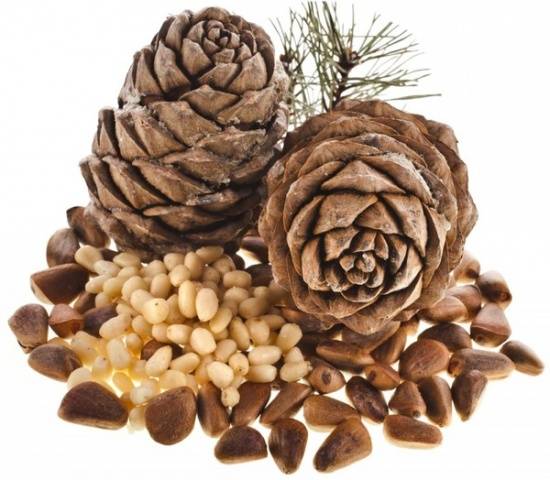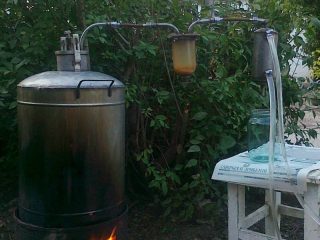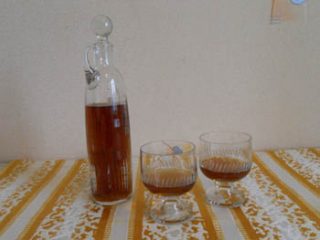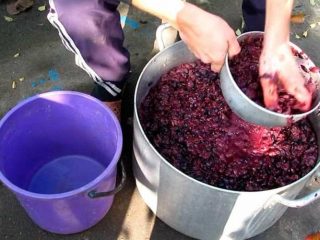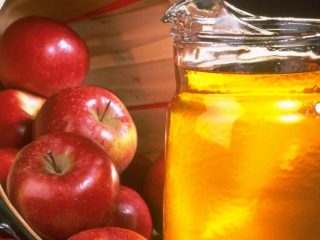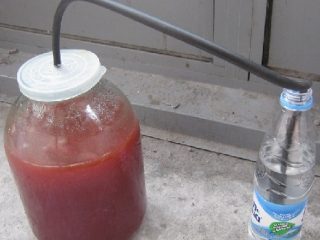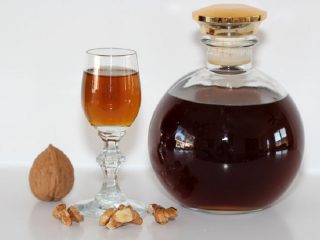Chacha is a strong alcoholic drink traditionally produced in Georgia. It is made not only artisanally, but also in distilleries. By and large, for Georgians, chacha is the same as moonshine for the Eastern Slavs, grappa for Italians, and rakia for residents of the Balkan Peninsula. Of course, there are differences in the preparation technology and raw materials, but they have one thing in common - all these alcoholic drinks are an integral part of national traditions.
Chacha at home in the Caucasus is prepared as simply and often as moonshine is prepared in our country. There is probably no person who has visited this country at least once and has not tried this drink, regardless of desire. Only children and pregnant women managed to avoid tasting chacha. Traditional Georgian hospitality includes not only a hearty feast and famous dry wines, but also stronger drinks.
During World War II, at the Yalta Conference, Stalin gave Churchill and Roosevelt chacha. Now this drink is known far beyond the borders of Georgia; it can be prepared not only from grapes; today, any fruit and berry raw materials are used in its production. Interestingly, the authorities of this country issued a patent for chacha in 2011.
What is chacha
We'll tell you how to make chacha at home, but first let's take a closer look at this strong drink. When classifying alcohol, it is classified as brandy.
Raw materials for the production of chacha
Traditionally for cooking chacha grapes are used at home. This makes it a drink akin to cognac or armagnac. But chacha is prepared not from wine, but from waste - cake, seeds, ridges left after fermentation, and substandard grapes that have not had time to ripen. True, no one forbids making a drink from juice; sometimes that’s exactly what they do.
In order to diversify the recipe and taste of alcohol, chacha is made from any, but exclusively fruit and berry raw materials, which is its main difference from vodka. Today, both in Georgian villages and in retail outlets you can find distilled products:
- apricot;
- sweet citrus fruits;
- persimmons;
- cherries;
- mulberries;
- figs;
- peaches;
- grenade.
Traditionally in western Georgia the drink is prepared from Rkatsiteli grape variety, Isabella and Kacich turned out to be more acceptable for Abkhazia. Depending on subsequent storage, chacha can be of two varieties:
- white, which is immediately poured into glass containers;
- yellow, aged in oak barrels.
From strong alcoholic drinks, tinctures with herbs, walnuts, and fruits are often prepared.
Strength, taste and calorie content
Chacha has the taste of raw materials - grapes or other fruits. Its strength is 55-60 degrees, which is significantly higher than most similar drinks. This must be taken into account when drinking, since chacha is easy to drink and has a fruity aftertaste.Factory distilled alcohol can have a strength of 45-50 degrees, while homemade alcohol can have a strength of 70-80.
The taste of yellow chacha aged in oak barrels is always more intense than that of white chacha; a non-specialist can easily confuse it with cognac. It should be stored in a cool, dark place, bottled in glass bottles. Plastic not only kills the delicate taste, but can also introduce unwanted substances.
Calorie content is 225 kcal per 100 g.
How and when to drink chacha
It is useless for a person who abuses alcohol to talk about the culture of drinking alcohol. He only needs to be reminded of the insidiousness of chacha, whose degrees are masked under a fruity aroma.
Those who drink alcohol in moderate doses are often interested not only in recipes so they can make the drink with their own hands, but also in national traditions of drinking strong drinks. This is how their taste is fully revealed. Chacha is drunk and eaten in different ways, depending on where you live:
- A quality drink should be at room temperature, which allows the flavor to fully develop, and should be drunk in small sips. Simple distillates are cooled to 5-10 degrees.
- In Georgian villages they drink a glass of chacha before going to work. Moreover, in the west they snack on churchkhela or other sweets, in the east – on pickles.
- In Abkhazia, chacha is served as an aperitif before a feast. Unaccustomed to such celebrations, guests of Georgia need to be especially careful, because quite strong alcohol will have to be washed down with wine.
Features of the drink
Making chacha at home is easy. It is much more difficult to drive out a drink that corresponds to national Georgian traditions. Of course, if authenticity is important to us, not the name. For some reason, when we make chacha, we make it look like moonshine, the Italians make it look like grappa, the Bulgarians and Moldovans make it look like rakija. Making the Georgian national drink has its own subtleties, which we will list below. It may not be easy to take into account all the points, but if you want to get chacha, there is no other choice.
- The main ingredient of the drink is grape or other fruit cake obtained after the production of wine or juice. A mandatory addition is unripe fruits.
- Fruits must be exclusively traditional for Transcaucasia. There is no such thing as apple or plum chacha.
- You cannot use sugar or any yeast other than “wild” yeast found on the surface of unwashed fruits. Of course, the drink will take longer to prepare, and it is generally impossible to prepare it from sour grapes.
- Prepare chacha from only one type of fruit. Grapes should be taken from white varieties.
- During distillation, you cannot separate chacha into fractions. Instead, double distillation and careful purification are used.
- The drink is aged only in oak barrels. If you use other wood, it will no longer be chacha.
- The strength of the drink should not be less than 45 degrees. Without going into the intricacies of chemical processes, we note that if you accidentally diluted chacha even to 43 degrees, and then increased the alcohol content by mixing it with an undiluted product, the taste will deteriorate.
Preparing chacha
Before giving a recipe for chacha at home, we warn you that to prepare it you will need a distiller, or simply a moonshine still. Each subsequent distillation increases the strength:
- single dose allows you to get alcohol with a strength of up to 40 degrees;
- double – 60;
- triple – 80;
- multiple – 96.
Pure alcohol is obtained by rectification.
From grapes
We suggest preparing chacha at home. A simple recipe requires that for every kilogram of grape pomace and bunches you need to take 2 liters of boiled water.
Take the pulp left over after making the wine.
Clean the bunches of substandard grapes from leaves and twigs, but do not pick them off for years. It should not be washed in order to preserve the “wild” yeast that is on the surface.
Mash the grapes thoroughly so that they release the juice. If you have a juice press, use it.
In a fermentation container, combine the pulp with crushed grapes and fill with water.
Stir with a wooden spatula and install a water seal. Place in a dark, warm place.
To prevent mold from forming on the surface, stir every 2-3 days.
After fermentation is complete, proceed to the next stage.
Preparation for distillation should take place in one of the following ways:
- Strain the mash, tie the cake in several layers of gauze and hang it from the top inside the moonshine still. This will make the alcohol more flavorful.
- There is no need to strain anything; put a layer of clean straw on the bottom of the distillation cube so that the cake does not burn.
After the first stage of distillation, you will get alcohol with a strength of about 40 degrees with a not very pleasant smell.
Dilute it with water 1:1 and distill again.
Purify the distillate. A separate chapter will be devoted to this.
Dilute to the desired strength, which should not be less than 45 degrees.
Bottle.
Place in the refrigerator or cellar for at least 1.5 months.
Unfortunately, in the north, grapes ripen poorly and often remain sour even by the end of autumn. And some are quite happy with the drink “a la chacha”, prepared with sugar. We simply have to tell you how to make it at home. The video offered for viewing describes the preparation of chacha with sugar:
From tangerines
Probably everyone is interested how to cook chacha from southern fruits. We give a recipe for a drink with tangerines, but they can be replaced with any juicy fruit.
For every 2 kg of peeled tangerines and cake obtained after obtaining the juice, take 1 liter of water.
Then do everything as described in the first recipe.
From pomegranates
This drink is not made as often in Georgia as grape or other fruit drinks, but it is highly valued.
For every kilogram of cake remaining after obtaining the juice, take 2 liters of boiled water and 100 g of peeled pomegranate seeds.
Prepare mash from the cake and water as described in the first recipe (do not add grains yet).
Distill the drink once, dilute to a strength of 30 degrees.
Pour pomegranate seeds with alcohol and leave in a dark place for 5 days.
Distill with grains.
Clean the drink, let it brew in the basement or refrigerator for 1.5 months.
Chacha cleaning
Without cleaning, the drink doesn’t smell very good, and we don’t need harmful substances at all. Everyone knows about purifying homemade wine or moonshine.So, these methods are not suitable for chacha. Potassium permanganate or activated carbon will only spoil the taste.
Cleaning with milk
Immediately after the second distillation, milk is added to chacha at the rate of 200 ml of casein per 10 liters of drink. It should stand in a dark place for a week, shake or stir twice a day with a wooden spatula. Then the alcohol is carefully drained from the sediment, passed through a cotton-gauze filter, diluted to the desired strength, and bottled.
Cleaning with pine nuts
Of course, you want to eat pine nuts and not throw them into an alcoholic drink. It’s just that the smell of acetone that may appear, especially if the mash has been over-exposed, is difficult. And pine nuts will do the job perfectly. Moreover, they will absorb harmful impurities.
For each liter of chacha, take a handful of peeled nuts and place in a dark place for 2 weeks. After this, the drink is filtered and bottled.
Conclusion
As you can see, there is nothing difficult about making homemade chacha. Just don’t forget about the insidiousness of the drink, which contains many degrees but is easy to drink!
